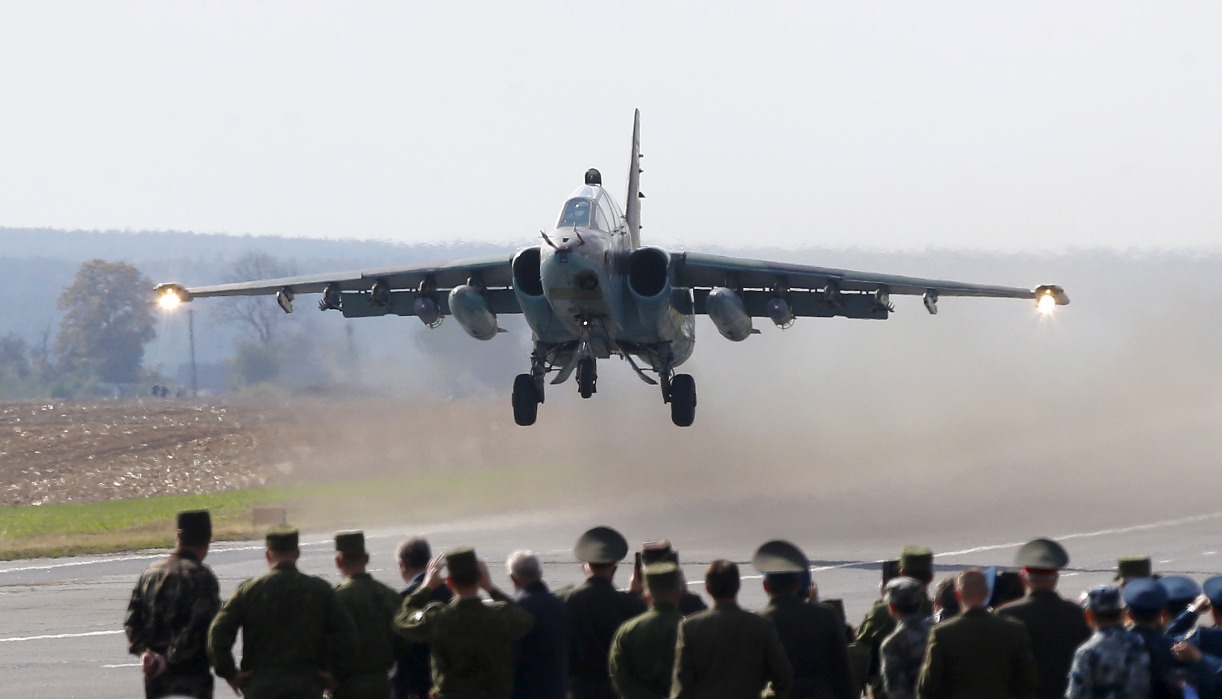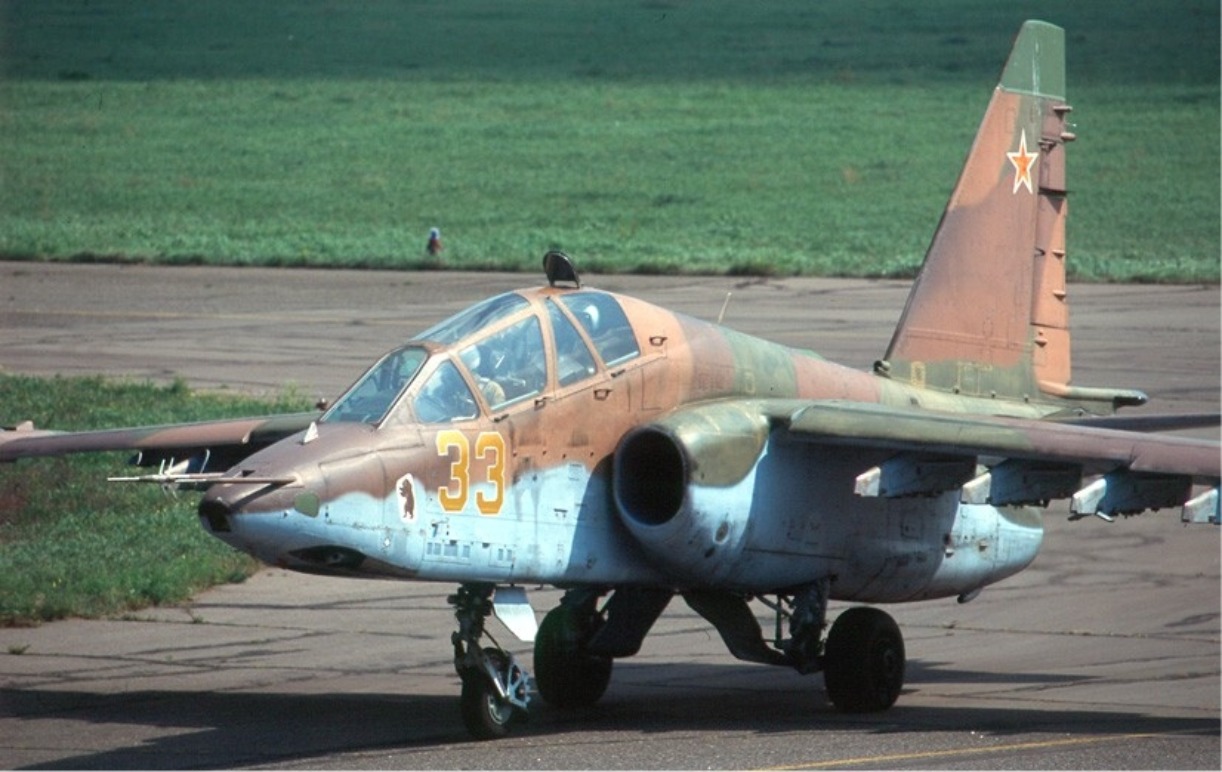Russia's Su-25 'Flying Tanks' Are Falling Out of the Sky in Ukraine
Since the onset of the war in Ukraine in February 2022, Russia has reportedly lost at least 350 military airframes, including numerous Su-25 "Frogfoot" jets.
Summary and Key Points: Since the onset of the war in Ukraine in February 2022, Russia has reportedly lost at least 350 military airframes, including numerous Su-25 "Frogfoot" jets.

-Designed as a counterpart to the American A-10 Warthog, the Su-25 has underperformed in combat.
-Ukraine's 110th Separate Mechanized Brigade recently released footage showing the destruction of a Russian Su-25 over Donetsk.
-The Su-25, with a top speed of 590 mph and armed with a Gsh-30-2 30 mm cannon and various missiles, has a history of poor performance in conflicts such as the Soviet-Afghanistan War and the Syrian Civil War. As the war continues, the outlook for the Su-25 remains bleak.
Russia's Su-25 Jets Struggle in Ukraine: Recent Losses Highlight Issues
Russia continues to lose airframes at a high pace in Ukraine. Soviet-era fighters and their modern Russian successors have all struggled to overcome Kyiv’s stockpile of advanced Western-delivered weapons.
Since the war began in February 2022, Russia has reportedly lost at least 350 military airframes, according to the General Staff of the Armed Forces of Ukraine. The head of the U.S. European Command has mirrored these numbers, stating that Moscow has probably lost roughly 10% of its total fleet throughout the war.
This week, Kyiv officials published yet another video showing the destruction of a Russian Su-25 fighter over the Donetsk region.
Ukraine’s 110th Separate Mechanized Brigade released the footage first. Ukraine’s Ministry of Defense also shared the video on X, asserting that, "The 110th Mechanized Brigade released a video of the destruction of a Russian Su-25 jet on June 10. Bravo, warriors!" Just a few weeks prior, Moscow lost another Su-25 in the same Eastern Ukrainian city.
While this subsonic, twin-engine jet platform was designed to be Russia’s counterpart to the American-made A-10 Warthog, the Su-25 has disappointed in combat.
Introducing the “Frogfoot”
The Sukhoi-designed Su-25 Grach first made its debut in the Soviet Union nearly five decades ago. Designated by NATO as “Frogfoot,” the Soviet-era jet was meant to fill the USSR’s need for a ground-support aircraft in the early days of the Cold War.
Although the Frogfoot shares some similarities with the Warthog, it is nowhere near as robust or effective. Earlier Su-25 variants were equipped with two R-95Sh non-afterburning turbojets on both sides of the rear fuselage. This base variant features a unique rangefinder considered to be an advanced avionics system despite its lack of TV guidance. The platform also possesses a Gardeniya radar jammer, an SPO-15 Sirena-3 radar warning receiver, and a DISS-7 doppler radar.
With a top speed of around 590 miles per hour, the Frogfoot is certainly not the fastest jet. In terms of armaments, the Su-25 is fitted with a Gsh-30-2 30 mm cannon and carries a range of air-to-air and air-to-surface missiles and rockets.
As detailed by Airforce Technology: “Air-to-ground missiles include Kh-23 (Nato codename AS-7 Kerry), Kh-25ML (AS-10 Karen) and Kh-29l (AS-14 Kedge). The air-to-air missiles carried on the smaller outboard pylons are the R-3S (AA-2D Atoll) and the R-60 (AA-8 Aphid).” Additionally, the Frogfoot can carry a variety of guided rockets, laser-guided bombs, incendiary devices, and cluster bombs.

The Frogfoot’s lackluster performance in Ukraine should come as no surprise considering its shaky operational history. Due to its poor design and lack of a formidable cannon, the Su-25 performed poorly in the Soviet-Afghanistan War in the 1980s, and it has similarly disappointed in the ongoing Syrian Civil War. As Russia’s invasion of Ukraine rages on, the trajectory of the Su-25 fleet is unlikely to change for the better.
About the Author: Maya Carlin
Maya Carlin, National Security Writer with The National Interest, is an analyst with the Center for Security Policy and a former Anna Sobol Levy Fellow at IDC Herzliya in Israel. She has by-lines in many publications, including The National Interest, Jerusalem Post, and Times of Israel. You can follow her on Twitter: @MayaCarlin.
All images are Creative Commons or Shutterstock.


